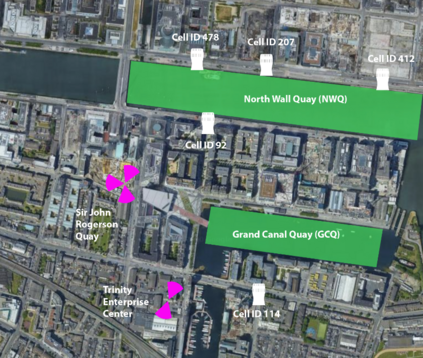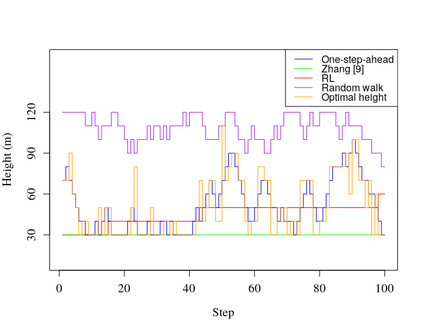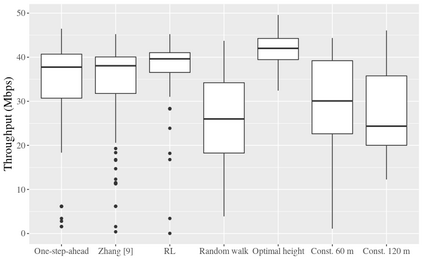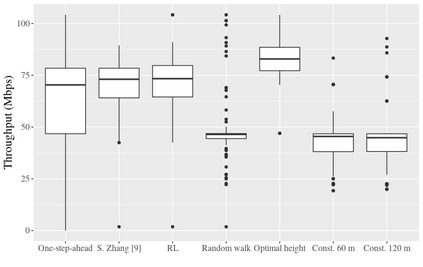Providing reliable connectivity to cellular-connected UAVs can be very challenging; their performance highly depends on the nature of the surrounding environment, such as density and heights of the ground BSs. On the other hand, tall buildings might block undesired interference signals from ground BSs, thereby improving the connectivity between the UAVs and their serving BSs. To address the connectivity of UAVs in such environments, this paper proposes a RL algorithm to dynamically optimise the height of a UAV as it moves through the environment, with the goal of increasing the throughput that it experiences. The proposed solution is evaluated using experimentally-obtained measurements from two different locations in Dublin city centre, Ireland. In the first scenario, the UAV is connected to a macro-cell, while in the second scenario, the UAVs associates to different small cells in a two-tier mobile network. Results show that the proposed solution increases 6 to 41% in throughput, compared to baseline approaches.
翻译:与蜂窝连接的无人驾驶航空器的可靠连接可能非常困难;其性能在很大程度上取决于周围环境的性质,例如地面BS的密度和高度。另一方面,高楼建筑可能会阻塞地面BS的不理想干扰信号,从而改善无人驾驶航空器与其服务的BS之间的连接。为了解决无人驾驶航空器在这种环境中的连接问题,本文件建议采用RL算法,在无人驾驶航空器穿过环境时动态优化其高度,目的是增加其经历的吞吐量。在评估拟议解决方案时,使用了来自爱尔兰都柏林市中心两个不同地点的实验性测量数据。在第一种情况下,无人驾驶航空器与大型细胞相连,而在第二种情况下,无人驾驶航空器与两层移动网络中不同的小细胞相连。结果显示,与基线方法相比,拟议解决方案的吞吐量增加了6%至41%。









